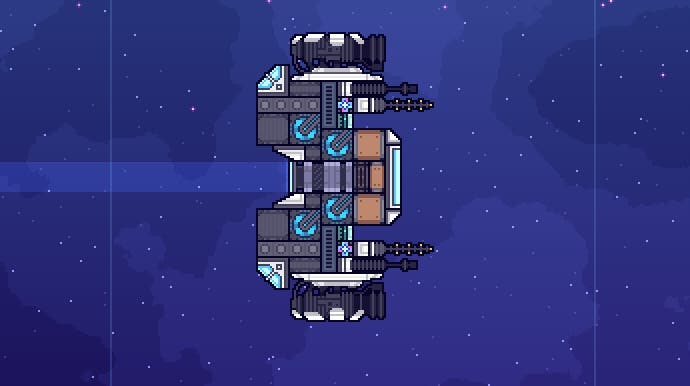What we've been playing
A few of the games that have us hooked at the moment.
15th of October, 2021
Hello! Welcome back to our regular feature where we write a little bit about some of the games we've found ourselves playing over the last few days. This time: Painting, typography, and cute animals in space - we are a broad church.
If you fancy catching up on some of the older editions of What We've Been Playing, here's our archive.
Behind the Frame: The Finest Scenery, Mac
Behind the Frame: The Finest Scenery is best played in one sitting; partly because it's roughly an hour long and, to stop, would ruin the flow. It moves at a relaxed pace from puzzle to puzzle which succeed in being both simple and engaging. Some rely on your memory, while others recreate the art of painting as you slowly craft a masterpiece.
(I will also openly admit to flat envy over the perfect creative studio our painter lives in.)
The game gradually creates a sweet tone until it unveils the silent tension it's been constructing through acts of repetition. It's here where you start to question exactly what kind of game you're playing, before the threads Behind The Frame have been spinning knot themselves together. While you might have already figured out the game's secret, the beautiful, expectedly animated, sequence is a joy to experience.
Like art itself, Behind the Frame focuses on a pinprick of time; exploring a memory of what once was and why it was so vital for the creator to so carefully record it. It leaves you immersed in a happiness kindly tinged by sadness.
Lottie Lynn
Kern Type, web
Kern Type or Kerntype? The irony is that I haven't been able to work it out. Google uses both, along with Kern Type and kern type. Anyway, let's call it Kern Type, and I'll quickly explain the irony: Kern Type is a game about getting the spacing right between letters.
This is one of those invisible jobs that makes the world around you seem correct: whether by machine or professional, for hundreds of years we have been quietly arranging text so it pleases the eye. I think - I say that, I haven't thought about it very much - that it's typography's version of proprioception, the spooky neurological sense that our limbs are where we believe they are. Kerning has been part of your world for as long as you've been reading.
And Kern Type has been part of mine for an age too. Every now and then I remember that this beautiful web game exists and then I rush back to play it for an hour. Here is a word - drag the letters to get the spacing so it looks good. How close did you get to the true answer?
Reader, I used to be good at this, and I am good at it no longer. I have played for twenty minutes this morning and that sound you can hear is Claude Garamond screaming at what I have done to his font. You can lose proprioception, so maybe you can lose the instinct to kern. Whatever's happened to me, do have fun with this beautiful game.
Chris Donlan
Sunshine Heavy Industries, PC
When I was at university in 2008, one of my favourite internet comics was called Daisy Owl. It featured cute animal characters, oddball plots, funny dialogue and heartfelt themes of family and friendship. It kept going for three years, then mysteriously stopped mid-story. I followed the creator on Twitter for a while to see if the strip ever made a return, but it never did. Roughly a decade later, the Twitter account started posting about the challenges of game design... and three years after that, a new indie game called Sunshine Heavy Industries was released.
Perhaps unsurprisingly, it features cute animal characters, oddball plots, funny dialogue and heartfelt themes of family and friendship. This time though, it's set in space, where you're the newest employee at a friendly neighbour shipyard. You're in charge of building 2D spaceships to a set of increasingly stringent requirements, starting with a handful of subsystems like fuel, engines and command modules and gradually incorporating more novel stuff like cloaking fields, armour, computer-y bits for AIs, weapons and warp drives. Each part has its own characteristics - where it can be placed, how much energy it uses, whether it produces or suffers from radiation - so you've got to experiment and think about what bits should go where. For example, a comms dish helps you meet communications requirements and adds armour to the bit of the ship it's on, but needs a clear line to the outside world, generates heat and is radiation-sensitive - so you've got to find the perfect place for it each time you're asked to include one. This complexity makes it really rewarding to create an efficient and good-looking ship that also meets the customer's demands.
Each mission adds a few new elements to play with and is bookended by cute story beats, all set to a cheerful lo-fi spacey soundtrack. Building ships to the requirements and under budget gives you some space cash to play with, which you can use on unlocking new parts. After the campaign - roughly four hours - there are daily challenges where you're competing against everyone else to deliver a working ship for minimal budget, plus randomly-generated single-player ships. This has been enough to keep me booting up the game each day, if only to hear the brilliant soundtrack for a few minutes while I tinker around with new ship layouts and reminisce about that web comic I read all those years ago.
The game's not had much mainstream attention, but all 101 of its user reviews on Steam have been positive - so I'd encourage you to check it out if you're in the mood for something sweet and spacey.
Will Judd



